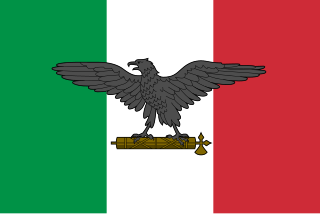
The Kriegsmarine was the navy of Nazi Germany from 1935 to 1945. It superseded the Imperial German Navy of the German Empire (1871–1918) and the inter-war Reichsmarine (1919–1935) of the Weimar Republic. The Kriegsmarine was one of three official branches, along with the Heer and the Luftwaffe, of the Wehrmacht, the German armed forces from 1935 to 1945.

A midget submarine is any submarine under 150 tons, typically operated by a crew of one or two but sometimes up to six or nine, with little or no on-board living accommodation. They normally work with mother ships, from which they are launched and recovered and which provide living accommodation for the crew and support staff.

Human torpedoes or manned torpedoes are a type of diver propulsion vehicle on which the diver rides, generally in a seated position behind a fairing. They were used as secret naval weapons in World War II. The basic concept is still in use.

Biber was a German midget submarine of the Second World War. Armed with two externally mounted 53-centimetre (21 in) torpedoes or mines, they were intended to attack coastal shipping. They were among the smallest submarines in the Kriegsmarine.

German submarine U-4 was a Type IIA U-boat of Nazi Germany's Kriegsmarine before and during World War II. She was one of the longest lasting German submarines of the period, primarily since half of her time was spent on training duties in the Baltic Sea.

Seehund, also known as Type XXVII, was a midget submarine built by Nazi Germany during World War II. Designed in 1944 and operated by two-man crews, it was used by the Kriegsmarine during the closing months of the war, sinking nine merchant vessels and damaging an additional three, while losing 35 boats, mostly attributed to bad weather. The French Navy used four captured boats after the war until 1953.

Delphin (dolphin) was a midget submarine created during World War II. Designed in 1944, only three prototypes were created by Nazi Germany's Kriegsmarine by the end of the war, all of which were destroyed. The Delphin was built for underwater speed attacks, as German engineers under the leadership of Ulrich Gabler discovered that past midget submarines were too slow to match the speeds of large ships in the English Channel.

The Neger was a torpedo-carrying craft generally described as a human torpedo which could not submerge, but was difficult to see during night operations. The vessel was used by Nazi Germany's Kriegsmarine between 1943 and 1945. The name comes from its constructor, Richard Mohr, whose surname in German also means "Moor" or "Negro."

HMS Sea Nymph was a S-class submarine of the third batch built for the Royal Navy during World War II. Completed in July 1942, she spent the majority of her career patrolling the waters off Norway in the North Sea, then was sent to the Pacific but was forced back due to technical problems.
Vorpostenboot, also referred to as VP-Boats, flakships or outpost boats, were German patrol boats which served during both World Wars. They were used around coastal areas and in coastal operations, and were tasked with – among other things – coastal patrol, ship escort, and naval combat.
The Black Sea Campaigns were the operations of the Axis and Soviet naval forces in the Black Sea and its coastal regions during World War II between 1941 and 1944, including in support of the land forces.

Operation Astonia was the codename for an Allied attack on the German-held Channel port of Le Havre in France, during the Second World War. The city had been declared a Festung (fortress) by Hitler, to be held to the last man. Fought from 10 to 12 September 1944, the Allied objective was to secure the harbour facilities intact, to deliver supplies to the Allied armies in Continental Europe. The Allies refused to let the civilian population be evacuated, despite offers of free passage by the fortress commander.

Hecht, also known as Type XXVIIA, was a two-man all-electric German midget submarine created during World War II.
German submarine U-486 was a Type VIIC U-boat built for Nazi Germany's Kriegsmarine for service during World War II. She was laid down at the Deutsche Werke in Kiel as yard number 321, launched on 12 February 1944 and commissioned on 22 March with Oberleutnant zur See Gerhard Meyer in command.

Marder was a German midget submarine developed from the Neger. The craft was 8.3 metres long and unlike the Neger included a flooding tank in the nose allowing it to dive. Another improvement was the dome through which the pilot viewed the outside world that also served as the craft's entrance and exit was made openable from the inside. Maximum diving depth was about 25 metres (82 ft).
German submarine U-410 was a Type VIIC U-boat built for Nazi Germany's Kriegsmarine during World War II, operating mainly in the Mediterranean. Her insignia was a sword & shield, she did not suffer any casualties until she was sunk.
German submarine U-1229 was a Type IXC/40 U-boat built for Nazi Germany's Kriegsmarine during World War II.

The National Republican Navy was the navy of the Italian Social Republic, a World War II German puppet state in Italy.

Surface flotillas of the Kriegsmarine were organizational groupings of German naval vessels during World War II based on class of vessel and geographical location. Surface flotillas were not operationally deployed units, but functioned through the administrative command chain of the Kriegsmarine.

The Type 1939 torpedo boats, also known as the Elbing class by the Allies, were a group of 15 torpedo boats that were built for Nazi Germany's Kriegsmarine during World War II.
















